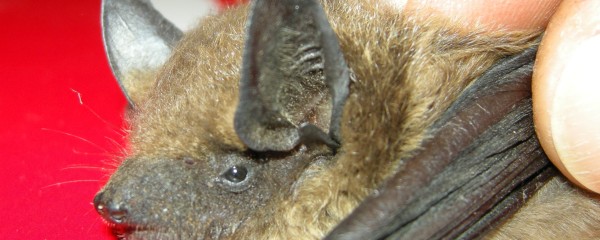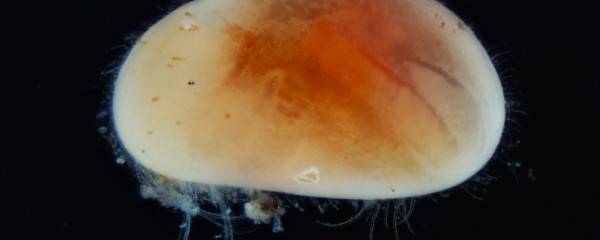The domestic cat only arrived in Europe 2,000 years ago via North Africa

An international genetic study, published in the renowned journal Science, shows that the domestic cat only appears in Europe about 2,000 years ago – and that it most likely reached the continent via North Africa. The Royal Belgian Institute of Natural Sciences provided crucial cat bones for the study. “We therefore have to rewrite the classical story,” says archaeozoologist Bea De Cupere. “It was not the first farmers from the Near East, but later trade networks around the Mediterranean that brought the domestic cat to Europe.”
The domestic cat (Felis catus) is today one of the most successful pets in the world. Researchers have long known that it descends from the African wildcat (Felis lybica lybica), but the precise origin and dispersal route were unclear for a long time. Did the cradle of our domestic cat lie in the Levant, in Egypt, or elsewhere within the natural range of the African wildcat? And when did the cat first appear in Europe?
Earlier studies, based on mitochondrial DNA (small structures that are present in large numbers in a cell), seemed to indicate that cats came to Europe from the Near East as early as the Neolithic – some 6,000 to 7,000 years ago – possibly together with the first farmers. The classical story was that cats were attracted by mice around grain stores in the first villages and thus gradually became familiar with humans.
The new study, led by palaeogeneticist Claudio Ottoni of the University of Rome Tor Vergata, paints a very different picture. The researchers based their work on genetic material from the cell nucleus and were therefore able to trace much more precisely how cat populations are related to one another. This shows that European domestic cats do not derive from cats that already “hitched a ride” with farmers from the Near East in the Neolithic, but from later populations from North Africa that were only brought to Europe in the past 2,000 years.

Belgian cat bones in an international DNA study
For the study, genetic data from modern cats were combined with DNA from archaeological cat remains from no fewer than 97 sites in Europe and the Near East. “Thanks to our extensive network in the archaeozoological world, we were the central collection hub for the hundreds of cat samples that were studied,” De Cupere explains. “All cat identifications were checked at the Institute; then they were catalogued and measured.”
The researchers also made an important contribution by selecting suitable bones for the study. Among other things, cat bones from excavations in the historic city center of Brussels (Parking 58) and in Tongeren proved to be valuable and were sampled for DNA analysis. To the naked eye, these bones can hardly be distinguished from those of wildcats, but with genetic techniques scientists can determine exactly whether they are European wildcats, African wildcats or true domestic cats.
“Animal bones from archaeological contexts are a goldmine,” says archaeozoologist Wim Van Neer of the Royal Belgian Institute of Natural Sciences. “With modern DNA techniques we can now uncover details that you would never see based on shape and size alone. The tiny bones from Brussels and Tongeren are just a few examples of how local material can help reconstruct a global story.”

Two North African routes into Europe
The analyses show that during the past 2,000 years there were at least two important introductions of cats from North Africa. In a first wave, about 2,200 years ago, wildcats from Northwest Africa were brought to Sardinia. The island’s present-day wildcat population descends from these animals.
A second, separate dispersal originated from a yet not precisely localised population in North Africa and had reached Europe by 2,000 years ago at the latest. This lineage formed the genetic basis of the modern European domestic cat. The genetic relatedness of European domestic cats to North African cats is clearer than their relationship to cats from the Near East.
“Genetic analyses show that European domestic cats are more closely related to North African wildcats than to cats from the Levant,” De Cupere explains. “That means our domestic cats did not simply travel along with the first farmers, but only arrived in Europe much later via other networks.”

Egypt, cat worship and ships full of mice
The new research builds on earlier work on the role of Egypt in the history of the cat. In 2014, the same team of archaeozoologists from the Royal Belgian Institute of Natural Sciences described an exceptional grave at the Predynastic site of Hierakonpolis in Upper Egypt, containing two adult cats and four kittens dating to about 3700 BC. It is one of the oldest clear indications that cats were deliberately buried in a human context.
In Pharaonic Egypt, cats were later venerated and sacrificed on a large scale, for example in the cult of the goddess Bastet. Such religious practices may have contributed to certain cat groups becoming more strongly associated with humans and to the fact that these particular animals were able to spread further.
The timing of the genetic waves of introduction from North Africa coincides with periods when trade around the Mediterranean intensified strongly. Cats likely travelled on ships as efficient mouse hunters on grain ships and other stored provisions on board, but possibly also as valued animals with religious and symbolic significance. In this way, maritime trade networks indirectly contributed to the spread of a new pet.

Multiple North African “cradles” of the domestic cat
The results of the study suggest that there was not a single “core area” of cat domestication, but that several regions and cultures in North Africa played a role. Some populations seem to be linked mainly to wildcats, as in Sardinia, while others form the basis of our modern domestic cats.
“Future research will have to show which North African populations precisely lie at the origin of today’s domestic cats,” says De Cupere. “We also want to better understand how ecological factors, religious practices and trade routes together led to the remarkable success of the domestic cat, which now lives with humans all over the world.”
What is already clear, however, is that the story of the domestic cat in Europe does not begin in a Neolithic grain store in the Near East, but much later and further south – in North Africa, where cats were given a special place in human life many thousands of years ago.
The study is published in the journal Science.





